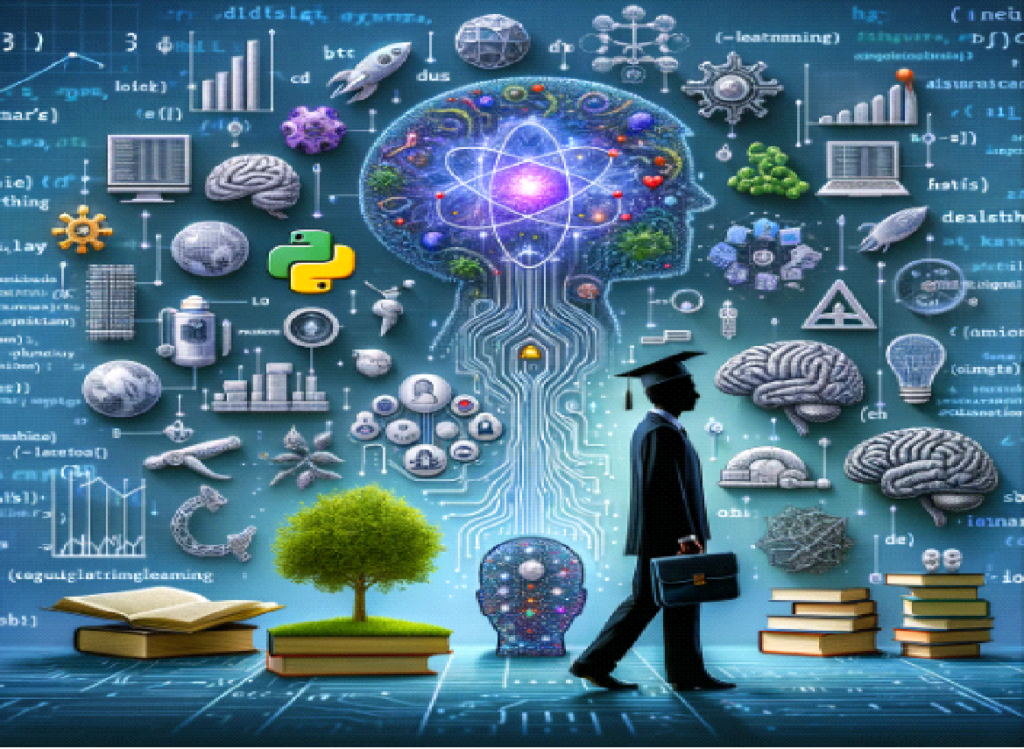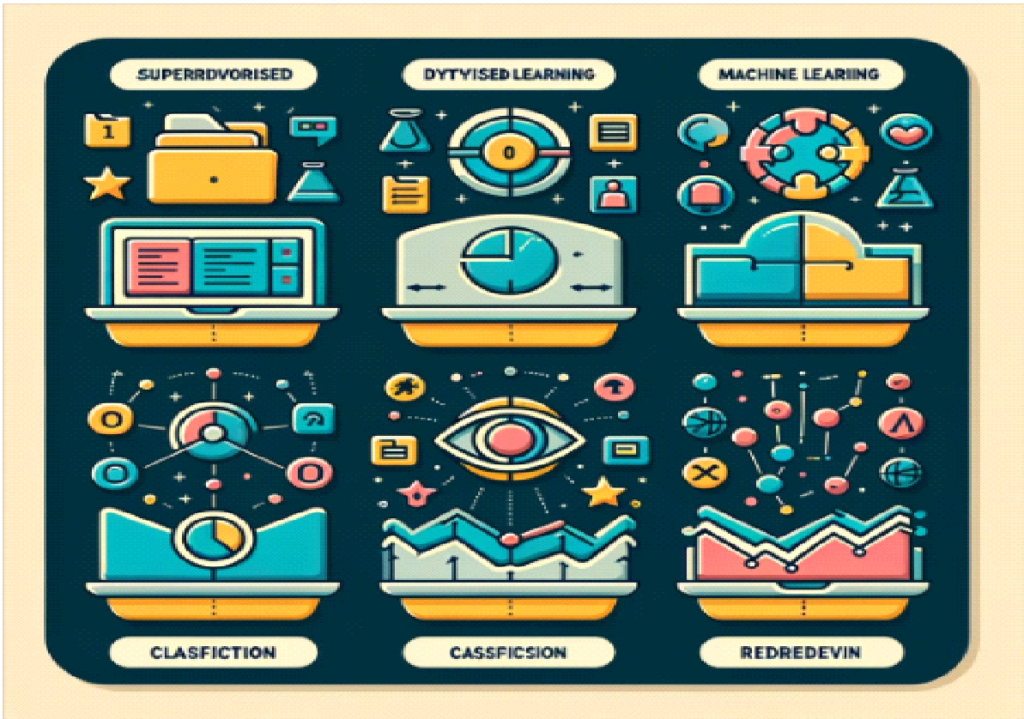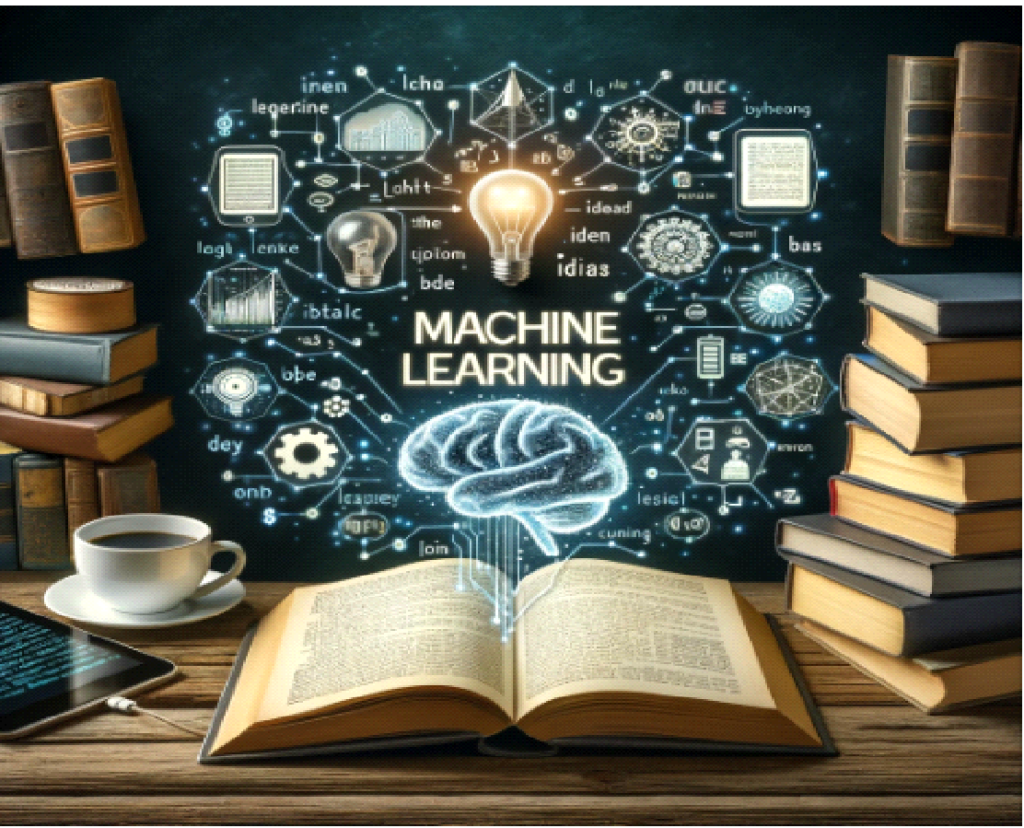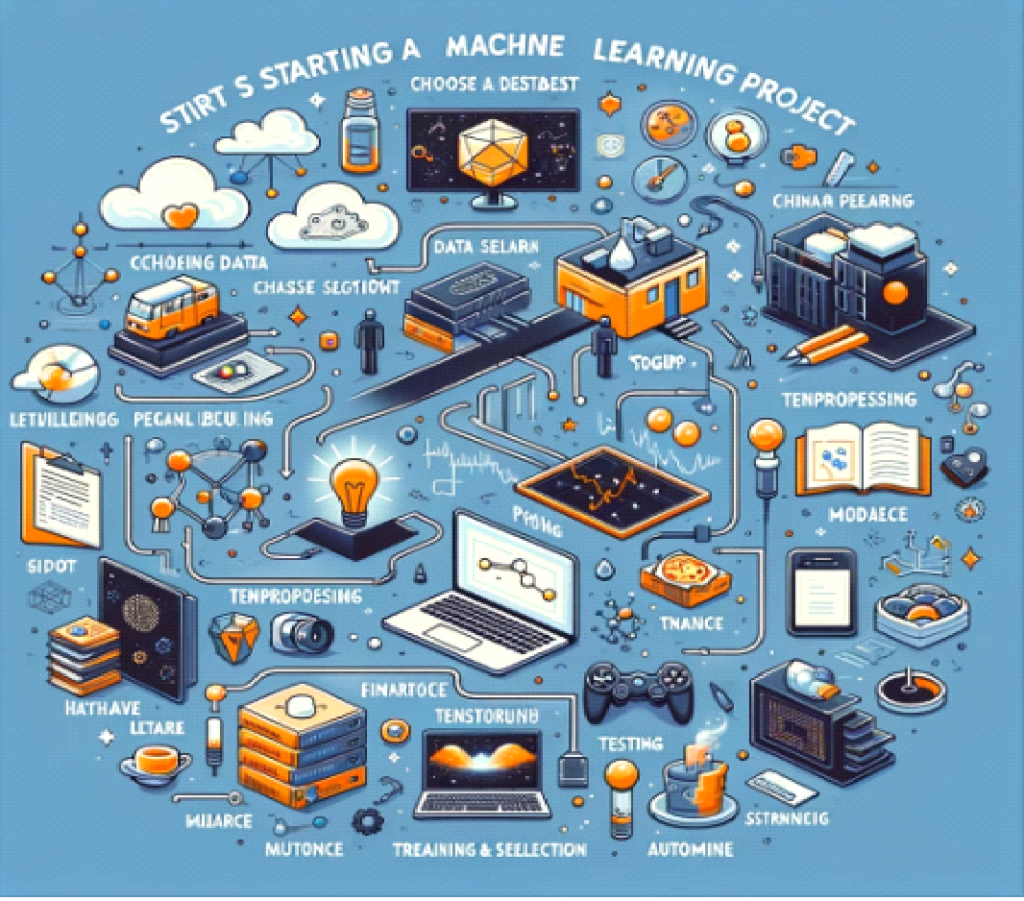Fundamentals of Machine Learning: A Comprehensive Guide
In an era where technology evolves unprecedentedly, Machine Learning (ML) stands out as a revolutionary force, driving innovations across every sector. ML’s impact is profound and far-reaching, from enhancing customer experiences with personalized recommendations to powering complex algorithms that predict global market trends. This comprehensive guide aims to demystify the fundamentals of Machine Learning, offering a springboard for beginners to embark on this fascinating journey. Whether you’re an aspiring data scientist, a tech enthusiast, or a professional seeking to leverage ML in your field, this article will lay the groundwork, revealing how Machine Learning is here and now, not only the future.

What is Machine Learning?
At its core, Machine Learning is a branch of artificial intelligence (AI) that focuses on building systems capable of learning from and making decisions based on data. Unlike traditional computer programs that follow explicit instructions to perform tasks, ML algorithms learn from historical data, identifying patterns and making predictions without being explicitly programmed for each decision. This adaptive approach to problem-solving enables machines to perform tasks with increasing accuracy over time, simulating human learning processes.
Types of Machine Learning
Machine Learning can be categorized into three primary types, each with its unique approach to learning and problem-solving:
1. Supervised Learning
Supervised Learning is the most prevalent type of Machine Learning, where the algorithm learns from a labeled dataset. In this setting, the training data include both the input and the corresponding correct output. The model aims to learn a mapping between inputs and outputs, allowing it to predict new, unseen data production. Supervised Learning is used for tasks such as:
- Classification: Categorizing data into predefined classes. For example, spam detection in email.
- Regression: Predicting a continuous value. For instance, estimating a house’s cost based on its characteristics.

2. Unsupervised Learning
The algorithm is provided data in unsupervised learning, but it is not given clear instructions on how to handle it. The data needs to be labeled, meaning no correct answer or output is provided. The goal is to explore the data and find some structure within it. Unsupervised Learning is often used for:
- Clustering: Grouping data points into clusters of similar items. For example, customer segmentation in marketing.
- Dimensionality Reduction: Reducing the number of variables under consideration and simplifying data to make it easier to visualize.
3. Reinforcement Learning
Reinforcement Learning is a type of Machine Learning where an algorithm learns to make decisions by performing specific actions and evaluating the outcomes in a dynamic environment. Unlike supervised and unsupervised Learning, reinforcement learning is based on a reward system: the algorithm (agent) learns to achieve a goal in an uncertain, potentially complex environment by trial and error, receiving rewards or penalties for its actions. This type of Learning is commonly used in:
- Gaming and simulations: Teaching computers to play games like chess or Go.
- Robotics: Enabling robots to perform tasks that require a sequence of decisions.
- Automated trading: Developing trading strategies that adapt to changing market conditions.
Prerequisites for Learning Machine Learning
Mathematics
A basic understanding of linear algebra, calculus, probability, and statistics is critical. These areas are the building blocks of ML algorithms.
Programming Skills
Python is the go-to language for ML, thanks to its simplicity and powerful libraries like NumPy and TensorFlow. Knowing how to code in Python will give you a decisive advantage.
Data Analysis
Being able to clean, analyze, and visualize data is crucial. Familiarize yourself with tools and libraries for data manipulation and graphical representation.
Best Resources for Learning Machine Learning
Books and eBooks
Many books and eBooks on machine learning are available for those who prefer to dive deep into the concepts at their own pace. Starting with titles that cover the fundamentals can solidify your understanding of core principles, algorithms, and their applications. Books with practical examples and coding exercises are precious, bridging the gap between theory and practice.

Community and Forums
Learning is a social activity, and the Machine Learning community is vibrant and welcoming. Joining forums and online communities can provide support, inspiration, and valuable insights from peers and experts. Whether you’re stuck on a problem, looking for project ideas, or curious about the latest trends and research in ML, these communities are invaluable resources.
Embarking on your Machine Learning journey is both exciting and daunting. By laying a solid foundation with these prerequisites and leveraging the resources available, you’re taking the first step towards mastering this transformative technology.

Kickoff Your First Machine Learning Project
Embarking on your first ML project might seem daunting, but it’s easier than you think. Here’s how to start:
- Choosing a Dataset: Start with a simple, well-documented dataset. Websites like Kaggle offer a plethora of datasets suitable for beginners.
- Data Preprocessing: Clean your data by handling missing values and normalizing data to ensure your model learns correctly.
- Model Selection: Choose a model that fits your problem type. Starting with linear regression for numeric predictions or logistic regression for classifications is advisable for beginners.
- Training and Testing: Use your chosen model to learn from the training dataset. Then, test its performance with a separate dataset to evaluate its accuracy and make improvements.
Tools and Libraries for Machine Learning
Dive into the world of ML with these essential tools:
- Scikit-learn: Great for beginners, it’s a comprehensive library for Python that supports most ML algorithms.
- TensorFlow and PyTorch: These libraries are more suited for deep learning projects. They offer flexibility and power for building and training complex neural networks.
Benefits of Machine Learning
Transforming Industries
ML is revolutionizing sectors by making predictions more accurate, automating tasks, and opening new insights:
- Healthcare: From diagnosing diseases to personalizing treatment plans.
- Finance: For fraud detection and automated trading systems.
- Automotive: Powering autonomous driving technologies.

Advancing Personal and Professional Growth
Learning ML enhances your skillset and opens up a wealth of career opportunities in data science, AI development, and beyond. It’s a field that encourages constant learning and application of knowledge in real-world scenarios.
Challenges and Ethical Considerations
While ML offers immense potential, it also comes with challenges like data privacy, algorithmic bias, and ethical use. It’s crucial to approach ML projects responsibly, ensuring fairness and transparency.
FAQs
Q1: What is Machine Learning?
Machine Learning (ML) is a dynamic branch of artificial intelligence (AI) focused on creating systems that learn and improve from experience without being explicitly programmed. It’s the science behind computers making decisions, recognizing patterns, and predictions based on data.
Q2: How do I start with Machine Learning?
Starting with ML is simpler than it seems. Begin by understanding the basics of Python programming, mathematics (especially statistics, probability, and linear algebra), and data analysis. Then, engage in hands-on projects using online resources or datasets from platforms like Kaggle to apply your knowledge practically.
Q3: Can I learn Machine Learning without a background in programming?
Yes, it’s possible! While programming knowledge, particularly in Python, is beneficial, many online courses and resources are designed to take you from beginner to proficient in both programming and Machine Learning simultaneously.
Q4: What are the main types of Machine Learning?
There are three primary types of Machine Learning: Supervised Learning, where the model learns from labeled data; Unsupervised Learning, which finds patterns in unlabeled data; and Reinforcement Learning, focused on making decisions based on rewards from interactions with the environment.
Conclusion
Understanding the fundamentals of Machine Learning is just the beginning. The vast and ever-evolving field offers endless opportunities for exploration and innovation. Dive into your first ML project, and don’t hesitate to share your experiences or questions. Consider subscribing to our newsletter for more insights and updates on the exciting world of Machine Learning. Embark on this learning journey, and let’s transform the future together!




Pingback: Understanding the Future of AI: Trends, Impacts, and the Basics for 2024 - The Future Web
Pingback: Using AI to Improve Healthcare and Finance - The Future Web
Pingback: AI in Cybersecurity: Revolutionizing Digital Defense Mechanisms - The Future Web
Pingback: Smart Teaching: The Pros and Cons of Integrating AI in Education - The Future Web